Fix: Chrome Extensions Stopped Working
Several Chrome users are reporting that they suddenly lost all functionality from any installed extension. Most affected users are reporting that the issue started occurring abruptly with no error message whatsoever. Right-clicking any installed extensions don’t do anything. Several users have reported that the context menu option for each extension is no longer showing up.
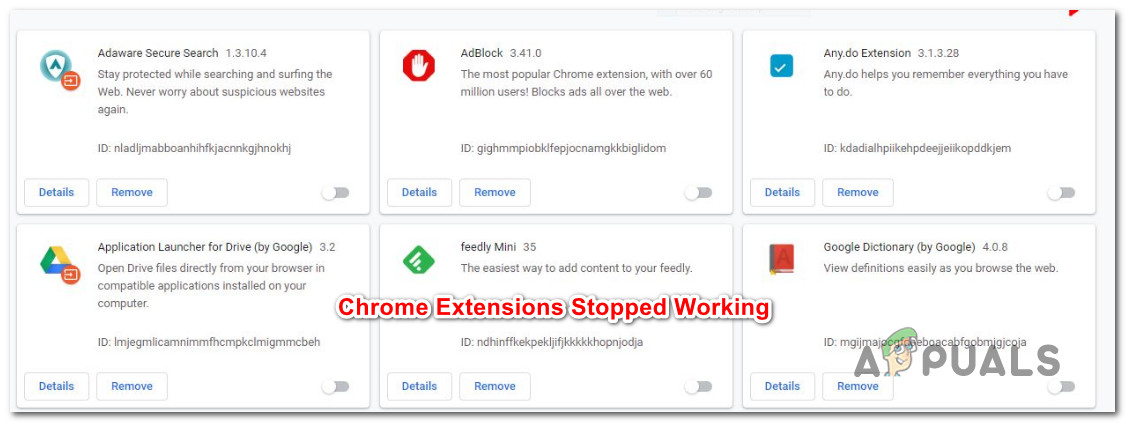
What is causing the Chrome Extensions to stop working?
We investigated this particular issue by looking at various user reports and the repair strategies that they successfully used to get rid of the problem. Based on our investigations, there are several different scenarios that will trigger this particular error message:
- Glitched Google Chrome process – More often than not, this particular issue occurs because the main Google Chrome process is hanging or becomes glitched. In this case, you can resolve the issue by ending the Chrome process Via Task manager and opening Chrome again.
- Installed Extensions Conflict – There is a lot of extension in Google Chrome that simply can’t play nice with each other. In some cases, you can resolve the issue by disabling and then enabling all extensions, but there are confirmed cases where affected users had to remove one or more extensions in order to restore the normal functionality for the rest.
- Outdated Chrome or Windows build version – As it turns out, Windows 10 includes a security feature that will prevent you from using extensions, add-ins or add-ons that improve on the functionality on the browser while. This is done in order to avoid putting your system at further risk. Some affected users have reported that they were able to use their extensions again after they installed every pending update in Windows Update and updated chrome to the latest version.
- Corrupted browser user profile – Another root cause that might be triggering this particular behavior in Google Chrome is a corrupted user profile. For several different reasons, your user profile might be unable to call upon Extension Manager, which will end up breaking all your available Chrome extensions. In this case, forcing your browser to create a new user profile will most likely resolve the issue.
- Experimental settings are conflicting with the Extension Manager – Another reason that might trigger this particular behavior is some experimental settings (flags) that are conflicting with Extension Manager. The easiest fix, in this case, is to revert all experimental settings to their defaults.
- Browser hijacker infection – There are several different variations of the Yeabd66.cc virus capable of breaking your extensions in the process of infecting your browser. Although you will be able to remove it with a Malwarebytes scan, you’ll likely need to reinstall your browser at the end of it.
If you’re currently looking for ways to get your Chrome extensions to work again, this article will give you some troubleshooting ideas. Down below, you’ll find a collection of potential fixes that users in similar situations have deployed successfully to resolve the issue.
If you want to be as thorough as possible, follow the methods below in the order that they are presented. One of the following repair strategies is bound to resolve the issue in your particular scenario.
Method 1: Ending the Chrome process via Task manager
A lot of users facing the same issue have managed to resolve it by closing Google Chrome and then ending the task (process) associated with the browser via Task Manager. This is the most popular solution out of the bunch, but a couple of users have reported that this fix was only temporary for them.
Some users are speculating that these steps end up resolving the issue in those cases where the main Google Chrome process glitches and ends up affecting the installed extensions.
Here’s a quick guide on ending the Chrome process via Task Manager.
- Close Google Chrome complete (make sure that you also close it’s a tray-bar icon).
- Press Ctrl + Shift + Esc to open up Task Manager.
- Select the Processes tab, right-click on Google Chrome and choose End Task.

Ending the Google Chrome task - Restart your Chrome browser and see if the issue has been resolved.
If you’re still unable to use any of your installed extensions, move down to the next method below.
Method 2: Re-enable every installed extension
Another fairly popular fix is to simply visit the Extension Manager menu and re-enable every extension that you currently have installed on your browser. A lot of users have reported that this procedure was successful for them, but some say that the fix is only temporary – the issue returns at the next browser startup.
If you don’t mind a temporary workaround, here’s a quick guide on re-enabling every installed extension:
- Open Google Chrome, type “chrome://extensions/” and press Enter to open up the Extensions tab.

Accessing the Extensions menu - Once you get there, set the toggle associated with each extension to disable it.
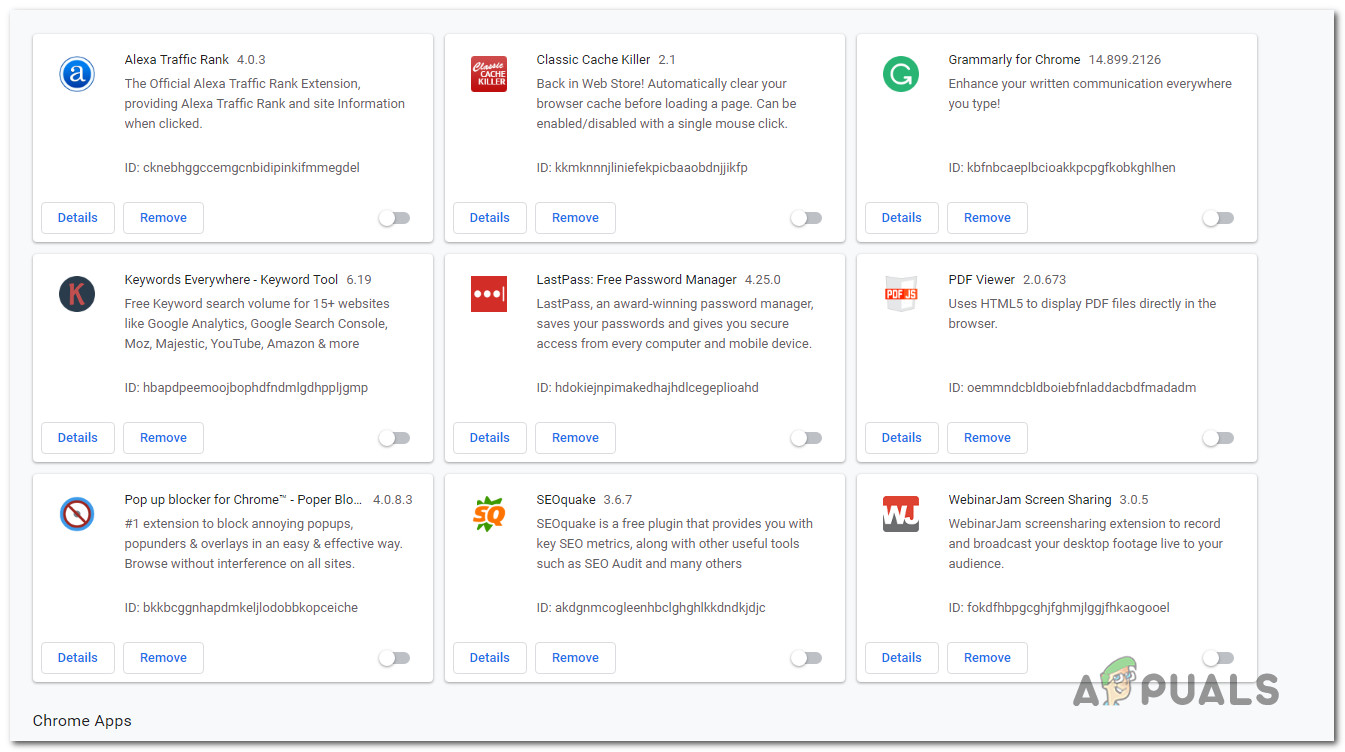
Disabling every installed Extension in Google Chrome - Once every Extension has been disabled, restart your Chrome browser and use step 1 again to return to the same extension menu.
- Once you get back to the Extension menu, re-enable all the extensions you previously disabled by switching their associated toggle to On.
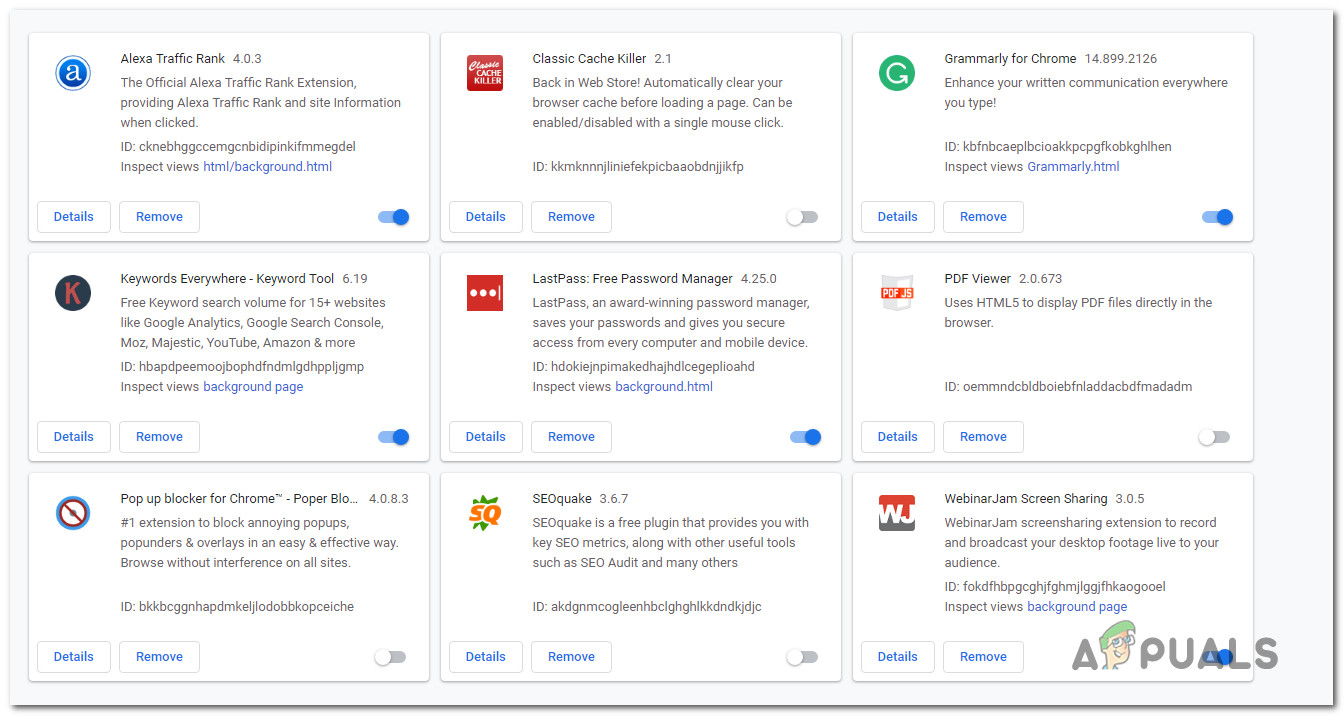
Enabling the previously disabled extensions - See if your extensions have started functioning again.
If you’re still unable to use any of your installed extensions, move down to the next method below.
Method 3: Updating Google Chrome and Windows to latest builds
Outdated software can also be what’s causing your extensions to malfunction. A couple of affected users have managed to resolve the issue by making sure that both Chrome and Windows 10 is updated with the latest available updates.
Both Chrome and your operating system should be configured to update automatically. But certain 3rd party applications might modify this default behavior (particularly power saving applications) and leave your system behind the latest builds available).
Here’s a quick guide on how to make your extensions usable again by updating Chrome and Windows to the latest version.
- Let’s start by updating Google Chrome. To do this, click the action button (top-right corner) and go to Help > About Google Chrome.

Go to Settings > Help > About Google Chrome - If a new version is available, the browser will automatically update itself to the latest version available.

Update Google Chrome - If a new version is available, follow the on-screen prompts to update, then close your Chrome browser completely.
- Press Windows key + R to open up a Run dialog box. Then, type “ms-settings:windowsupdate” and press Enter to open the Windows Update screen of the Settings app.
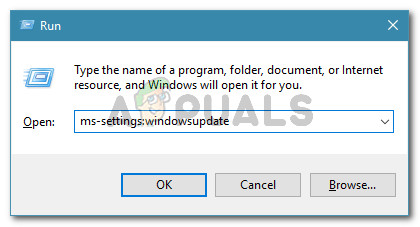
Run dialog: ms-settings:windowsupdate Note: If you’re not on Windows 10, use the “wuapp” command instead.
- Inside the Windows Update screen, click on Check for Updates and follow the on-prompts to install every pending update until there is nothing left to update. If you’re prompted to restart in this process, do so and make sure to return to the Update screen at the next startup to continue the updating process until it’s complete.
- Once your computer is up to date, open Google Chrome and see if your extensions are now usable.
If you’re still unable to use any of your installed extensions, move down to the next method below.
Method 4: Creating a new user profile
Another root cause that might be triggering this particular behavior in Google Chrome is a corrupted user profile. Several users that have started facing the same issue after an unexpected shut down reported that they were able to fix it by creating a new user profile.
You can even avoid any data loss by creating a back-up of the Default folder before making the switch to a new profile. Here’s a quick guide on how to create a new user profile in Google Chrome & avoid any data loss:
- Make sure that Google Chrome is completely closed.
- Press Windows key + R to open up a Run dialog box. Then, type “%LOCALAPPDATA%\Google\Chrome\User Data\” and press Enter to open up the location containing the default Google Chrome folder.

Opening the location of the Default Chrome profile - Once you get to that location, look for a folder named Default. Once you see it, right-click on it and choose Rename. Then, name the Default folder to Default-Bak to force the browser into creating a new one.
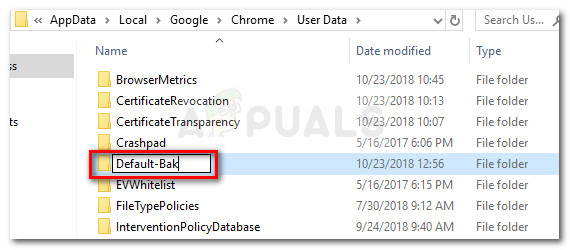
Renaming the Default folder to Default-Bak - Once the Default folder has been renamed, open Google Chrome once again and see if you can use your extensions once again.
Note: Remember that you still have your old Default folder (renamed as Default-Bak). If you can open it to migrate any folders (Sync Data, Accounts, Extensions) you need from your old Default folder to your new one.
If this method didn’t allow you to restore the functionality of your Google Chrome extensions, move down to the next method below.
Method 5: Disable Experimental Settings in Google Chrome
If you messed around with Chrome’s experimental settings under about:flags, it’s very likely that some settings are conflicting with your extension manager. We’ve encountered this culprit more than often with similarly affected users.
Most users that managed to break the functionality of all their installed extensions by enabling some experimental settings have reported that the issue was resolved after they Reset all experimental settings to the default.
Here’s a quick guide on how to disable any previously enabled Experimental Settings in Google Chrome:
- Open Google Chrome, paste about:flags inside the navigation bar and press Enter. If it’s the first time you’re trying to access the experimental settings of Chrome, you will be prompted by a warning screen.
- Once you arrive at the Experimental Settings page, simply click on the Reset all to default button (top-right corner) to disable all settings.
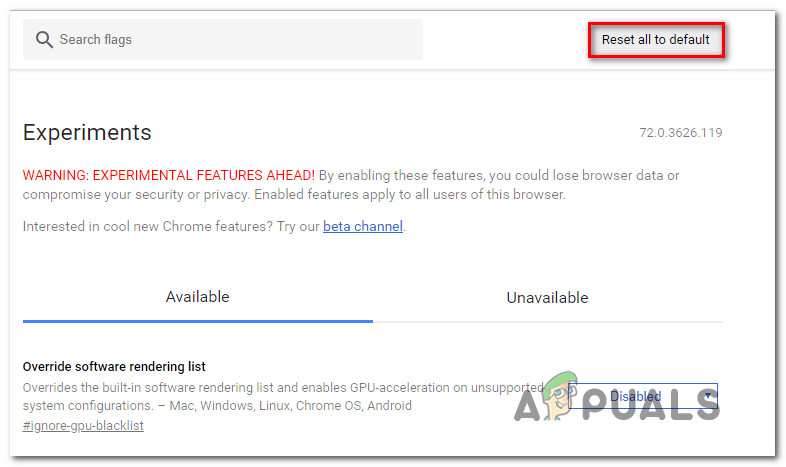
Resetting all experimental settings to default - Once all previously enabled experimental settings have been disabled, restart your Chrome browser and see if your extensions become visible again.
If you’re still encountering the same error message, move down to the next method below.
Method 6: Performing an anti-malware scan with Malwarebytes
If you’ve come this far without a fix for your issue, it’s very possible that you might be dealing with a browser hijacker. There are quite a few variations of the Yeabd66.cc virus that is known to break the Extension Manager in Google Chrome.
Naturally, there are a lot of security solutions that you can use to get rid of the issue. But, based on our experience, we recommend a deep Malwarebytes scan as it’s definitely the best free alternative when it comes to scanning for and removing browser hijackers.
If you’re unsure on how to run a Deep scan with Malwarebytes, you can follow this article (here).





